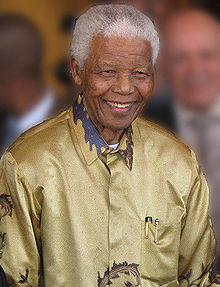Revisiting Intelligence Reform
Working closely with Director of National Intelligence (DNI) Michael McConnell, he has slowly begun to assert civilian control over the key spy agencies funded by the defense budget and halted the Pentagon’s efforts to create its own intelligence apparatus independent of the CIA. The recent intelligence assessment of Iran’s nuclear ambitions, in contradicting early administration assertions, is perhaps the most significant sign of this newly won independence.
Those are significant actions. Under Rumsfeld, the Pentagon had become the dominant force in U.S. intelligence, with vast new powers in human intelligence and counterterrorism, both at home and abroad. By 2005, it was deploying secret commando units on clandestine missions in countries as far afield as the Philippines and Ecuador, sometimes without consulting with the local U.S. ambassadors and CIA station chiefs. At some point, President George W. Bush and his national security team apparently decided that the genie had to be put in the bottle, and sent Gates – a former CIA director who had worked closely with Vice President Dick Cheney during the first Bush administration – to put the kibosh on Rumsfeld’s private intelligence army.
But these efforts by Gates and McConnell to demilitarize U.S. Intelligence will never succeed until Congress, with the support of the next administration, removes the three national collection agencies – the National Security Agency (NSA), the National Geospatial-Intelligence Agency (NGA) and the National Reconnaissance Office (NRO) - from the Pentagon’s command-and-control system and places them directly, like the CIA, under the control of the Office of the Director of National Intelligence (ODNI).
That consolidation was one of the key recommendations made by the 9/11 commission that investigated the role of U.S. spying agencies prior to the terrorist attacks of 2001. This consolidation was supposed to happen under the 2004 intelligence reform bill that grew out of the commission’s deliberations. At the last minute, however, pro-military lawmakers supported by Rumsfeld stripped the language that would have done the trick out of the bill. Until Congress restores that provision, the bulk of intelligence spending - and therefore the critical decisions about how to deploy spying assets – will remain under military control.
Three National Collection Agencies
The NSA, the NGA, and the NRO are the crown jewels of America’s vast intelligence system and make up the most powerful surveillance and eavesdropping system on the planet. Together, the three agencies are responsible for about half of the $42 billion the government spends every year on its National Intelligence Program, which also includes the CIA and the much smaller intelligence units within the FBI and the Departments of State, Treasury, Homeland Security, and Energy. The rest of the intelligence budget goes to tactical intelligence units within the Pentagon and the Armed Services.
The NSA, as most American readers are increasingly aware, monitors billions of phone calls, e-mails, and Internet messages flowing through the global telecommunications system from listening posts throughout the world, and then analyzes them for possible clues to threats to the nation. It is led by Army Lt. General Keith Alexander, who has at his command a hugely expensive army of contractors providing cutting-edge technology in cryptology, data-mining, social network analysis, and super-computing, all of which are used to search telephone and Internet traffic for information about foreign leaders, military commanders, and trade negotiators, in addition to picking up chatter about terrorist organization and potential plots. Anyone who watched Colin Powell’s disastrous 2003 appearance before the UN Security Council should remember his display of three NSA intercepts of cell phone calls made by Iraqi military commanders – examples of the agency’s incredible ability to listen in on communications thousands of miles away.
The NGA was formally inaugurated as a combat support agency of the Pentagon in 2003, and is therefore less known to the American public. It supplies imagery and mapping products to the military and national leaders that are beamed to earth from photoreconnaissance planes, commercial and military satellites, and unmanned aerial vehicles. Geospatial intelligence is used in everything from climate studies and human rights reporting to the tracking of enemy soldiers and insurgents in Iraq. The NRO, meanwhile, builds and maintains the spy satellites that feed the NSA and NGA and operates ground stations, both at home and abroad, where imagery and signals data is translated, analyzed, and sometimes combined.
These three agencies probably supply about 75% of the information that appears every morning in the presidential daily brief, which intelligence officials say has evolved into a multi-media presentation in which NSA phone intercepts compete with NGA imagery and live video streams for the president’s attention. As I’ve reported elsewhere, since 2004 the NSA and the NGA have also been collaborating closely – using the NGA's “eyes” and the NSA’s “ears” - to create hybrid intelligence tools that are used primarily by the military. By combining intercepts of cell phone calls with overhead imagery gathered by unmanned aerial vehicles (UAVs), intelligence analysts can track suspected terrorists or insurgents in Iraq in real time. As these tools become available for use by domestic policing agencies, a possibility created by a new intelligence institution known as the National Applications Office[link to my recent article on the NAO - the power of the military to conduct both foreign and domestic intelligence will increase.
No Debate
For most of their existence, the Pentagon has controlled the NSA, NGA, and NRO, appointed their directors, and maintained ultimate authority over the information they collect and how it is used. These agencies, then, are essentially military assets, to be used as directed by the secretary of defense.
But there has been no public debate about this issue. Within the intelligence community, officials and contractors at the CIA and the NSA generally support the idea of a strong ODNI with authority over their budgets. But officials and contractors directly involved in defense intelligence – including the expensive communications and networking apparatus that supports the computerized, network-centric warfare of precision bombing practiced in Iraq – prefer working for the Pentagon. Any debate these two groups have, however, is held in secret and behind the closed doors of the intelligence-industrial complex.
One of the only voices to press the case for civilianized intelligence is Melvin Goodman, a former CIA officer at the Center for International Policy. Goodman resigned from the CIA over what he perceived as the politicization of Soviet analysis during the 1980s. In op-eds going back over a decade he has argued consistently for placing the three national agencies under control of a director of national intelligence. “The collection of strategic intelligence is being given short shrift because of the military’s emphasis on tactical intelligence and support for the warfighter,” Goodman told me in an interview for my forthcoming book on intelligence outsourcing. While the nation can’t deny intelligence support to warfighters in places like Iraq, “if you don’t get the job of strategic intelligence done correctly, you will blunder in your larger national security policies,” he says.
The penultimate example of such a blunder occurred in 1998, when U.S. intelligence failed to detect the Indian government’s planning for its first test of a nuclear weapon – a failure that led in part to the collapse of the Comprehensive Test Ban Treaty. “I blame that in part on the collection requirements of the military dominating” the intelligence bureaucracy “and not being interested in arms control or the Indian subcontinent,” Goodman told me. Essentially, he said, the weapons test wasn’t picked up because U.S. spy satellites had not been programmed to tip toward India in the crucial weeks leading up to the test. Intelligence leaders “have a list of priorities, and the satellite collection corresponds to one, two, and three priorities, and arms control wasn’t one of them,” he said. And because the Pentagon wasn’t particularly interested in arms control, what was happening on the Indian subcontinent merited little attention.
That incident underscores that decisions about how and what intelligence is collected at any given time are deeply political, and should be carried out by elected national officials whose interests go beyond immediate military goals. Consider the NGA and its considerable abilities to provide overhead imagery and mapping tools. During the 1990s, when the NGA was known as the National Imagery and Mapping Agency (NIMA), an analyst assigned to monitor satellite imagery from the Balkans began to compare what he was seeing on the ground in Bosnia to past photographs of the area. Working on his own time late at night, he noticed that certain towns in Bosnia showed unmistakable signs of ethnic cleansing, including destroyed mosques and what looked very much like mass graves. The analyst brought his findings to the CIA’s National Intelligence Council, which realized their importance and showed them to senior officials from the State Department and the National Security Council. Using that evidence, the Clinton administration charged the government of Serbia with crimes against humanity - an event that led directly to the NATO bombing campaign. Whether one agrees or not with the NATO response, the imagery became a powerful tool for the Clinton administration.
This link between intelligence-gathering and administration action happened because Clinton’s government – and that individual analyst - was deeply concerned about the Balkans. The same tools in the hands of officials concerned about the plight of indigenous people in, say, Guatemala, could have turned up similar evidence of crimes by the Guatemalan military against its people, in numbers far greater than those in the Balkans. Similarly, human rights groups are today using unclassified commercial imagery to track ethnic cleansing in Darfur and Burma (or Myanmar, as that country’s military government calls itself). Because the NGA is a combat agency of the Pentagon, however, its tools – which include both unclassified imagery purchased from commercial satellite vendors and classified imagery supplied by U.S. spy satellites – are at the command of military leaders, who make the ultimate decisions about where to aim their cameras. That is the legacy of military control over the national agencies, a process that deepened during the first six years of the Bush administration.
Tim Shorrock has been writing about U.S. foreign policy and national security for nearly 30 years. His book, Spies for Hire: The Secret World of Outsourced Intelligence, will be published in May 2008 by Simon & Schuster.
sfux - 7. Dez, 08:01 Article 2309x read
















































